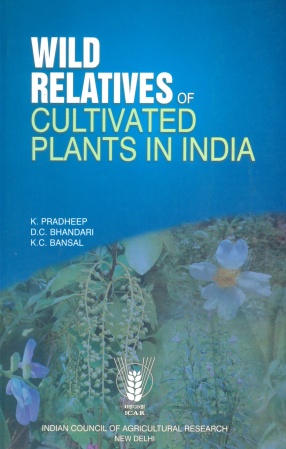Wild Relatives of Cultivated Plants in India
In the world, about 14% of the higher plant species (c.35,000) are in cultivation to some degree. And in India, presumed estimate of plants in cultivation is approximately 4,000 taxa. Productivity of most of the economically important crops is indicating an almost straight line, and the known genetic resources within a particular crop can be delimiting factor for any further scope in its improvement.
To attain overall sufficiency in food, fodder and fibre in the 21st century, role of wild relatives, which generally have attributes to combat adversities, can be a significant one, as the known available germplasm-base of the crops does not seem to be sufficient to meet the ever-ending search for the desirable attributes. Needless to say that understanding the proximity among the relatives and the cultivated plants is the lynchpin in realization of this goal.
This present book is a compilation of taxa in India related to cultivated plants of economic importance, based on the literature of over past six decades. The very idea behind this publication is twin fold-to update knowledge, in general, hence, the status of the related species occurring in India, and the native wild relatives, in particular, on some scientific ground along with assessing their worthiness in crop improvement.
An inventory of wild relatives (native and introduced) of about 2,000 cultivated plant species belonging to 1,258 genera, which is likely to form the basis for future conservation and utilization, has been attempted for the first time. Considerable emphasis has been given largely to unattended crop-groups such as forages, ornamentals, medicinal and aromatic plants, plantation crops and agroforestry trees.
In the light of the contemporary biotechnological advances, most, if not all, species can be a potential gene donor to crops, but in practical sense of conservation and utilization for food and agriculture, there will be no second thoughts on putting the major emphasis on wild relatives of crops. This publication is limited to seed-bearing plants; hence agriculturally important lower order plants such as ferns, mushrooms, etc. have not been included.
Valid names of genera are presented in bold capitals in alphabetical order. The genus name is followed by general information on its distribution, basic chromosome number and other relevant information, and afterwards the collated information of the cultivated species and their wild relatives is given. Due emphasis has been given to mention traits in the taxa, which would be desirable for improving crops.
This compilation would be of immense value for plant-genetic resource personnel, plant breeders, crop evolutionists, policy-makers and conservation practitioners.
Get it now and save 10%
BECOME A MEMBER







Bibliographic information
D.C. Bhandari
K.C. Bansal